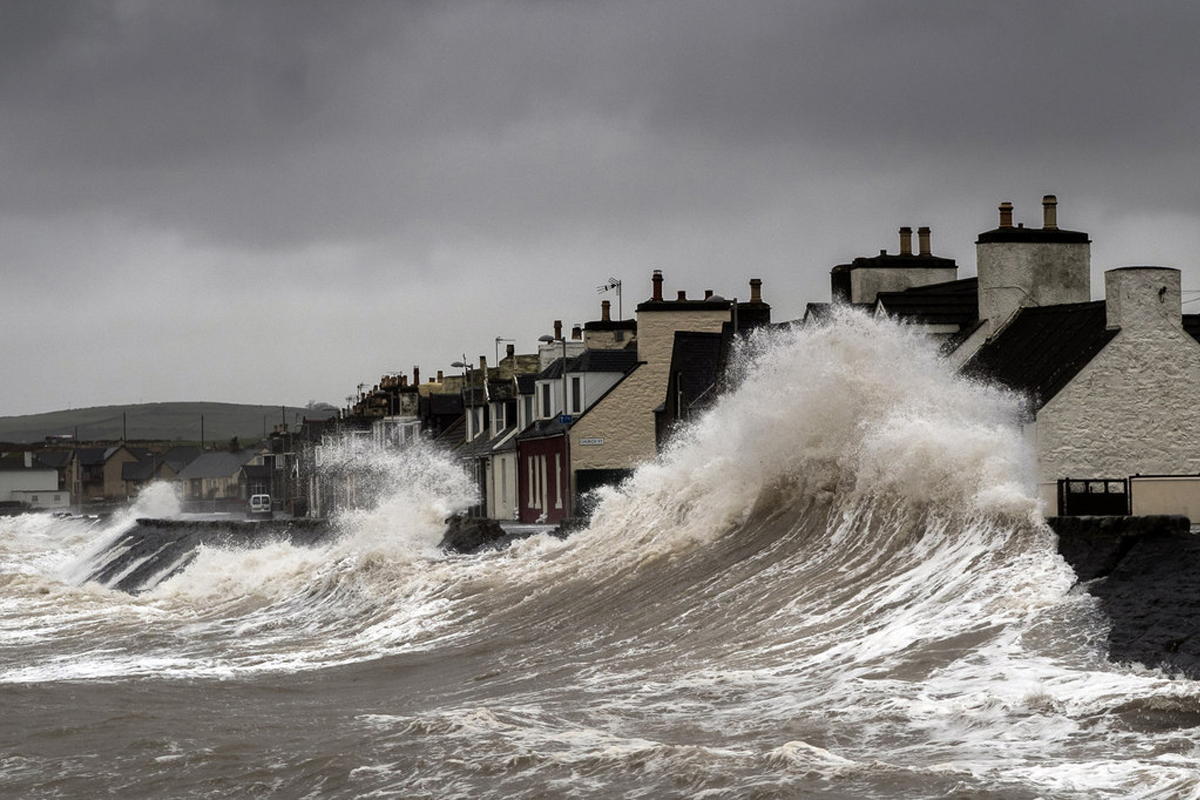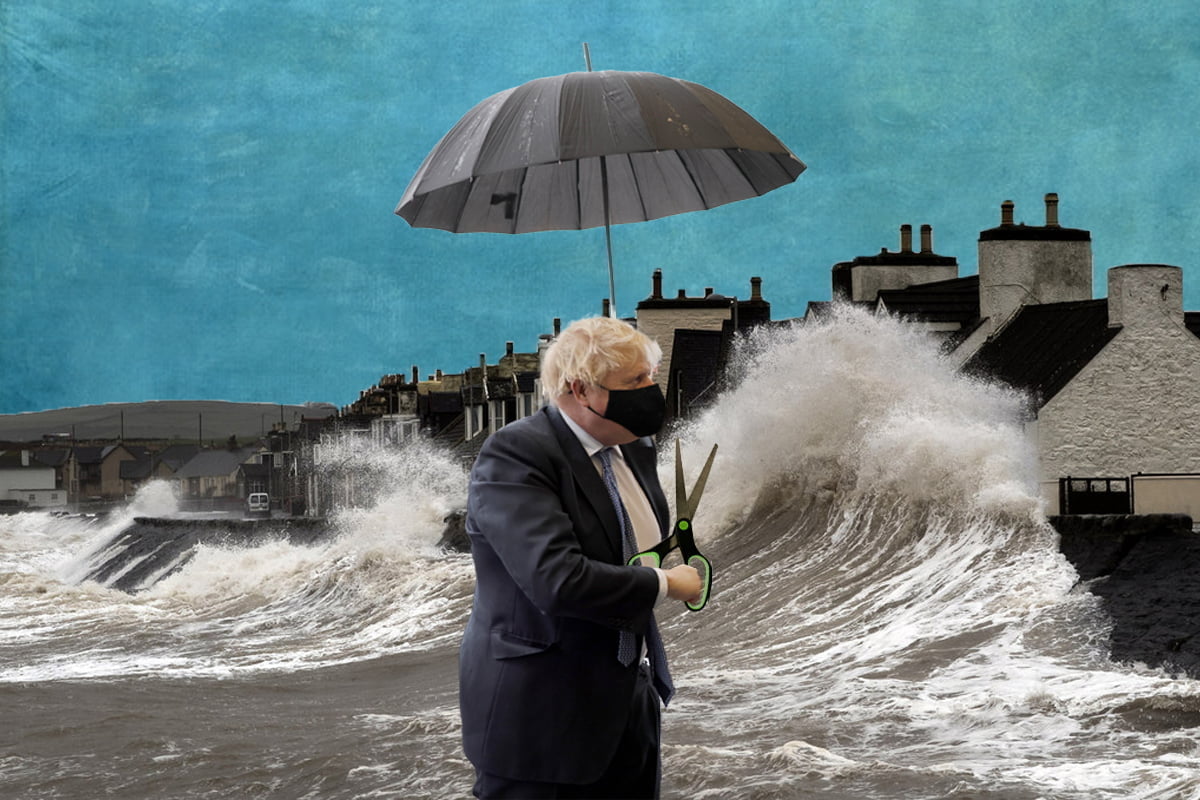Following a trio of violent storms and days of heavy rain, thousands across the country – from Somerset to North Yorkshire – have found themselves, their homes, and their communities completely immersed by flooding.
Alongside causing widespread chaos and disruption to travel networks, flights, and delivery services, the most powerful of these tempests, Storm Eunice, killed three people and left 1.4 million homes without power.
Déjà vu

The flooding seen on the back of these storms – named Dudley, Eunice, and Franklin – provokes a sharp sense of déjà vu.
Recent scenes of submerged roads, fields, and houses are strongly reminiscent of those witnessed in Yorkshire in autumn 2019 and spring 2020; and also of floods that ravaged much of Britain following storm Christoph in 2021.
In Leeds, for example, JCBs were spotted floating down the River Aire; a bridge was destroyed at Armley Mills; and major disruption was caused to trains and transport in and out of the city.
Not for the first time, flooding transformed Rotherham train station into a canal, shutting the station down completely.
“We’ve evacuated where we can,” stated Zoe Divine from the Tadcaster Flood Action Group, “but it’s just a waiting game to see how high it actually gets.”
For those whose houses have been flooded, it then becomes a waiting game for water levels to finally drop before an arduous and difficult recovery process can begin.
Like clockwork, after every deluge, Tory ministers visit affected areas, with the PM congratulating the emergency services and making promises of increased funding for flood prevention.
Yet in spite of this, year after year, local residents end up in the same situation – trapped in a soggy, sick reboot of Groundhog Day.
Cuts and costs

Despite all of the assurances and pledges, austerity over the last decade-or-more of Tory rule has cut the budget of the Environment Agency (EA) – the main body in charge of flood prevention – by as much as a quarter.
At the same time, climate change is estimated to increase flooding dramatically over the next 20 years, with four times as many UK households predicted to be at risk.
This pernicious trend is exacerbated by unscrupulous property developers knowingly building new houses on flood-prone land, in order to save on costs and increase profits.
The bill from flooding is in the order of magnitude of billions. For example, summer flooding in 2007 is estimated to have cost around £3.2 billion – more than four times the EA’s annual budget at the time of £709 million.
Similarly, the UK’s Climate Change Risk Assessment, published in 2012, predicted that losses from coastal and river flooding would rise from a current annual average of approximately £1.2 billion to between £1.6-6.8 billion by the 2050s.
Yet despite these rising costs (and rising waters), the money spent on averting disaster is moving in the opposite direction. Meanwhile, it is ordinary people who are left to pay the price, in the form of ruined homes, increased insurance premiums, and shattered lives and livelihoods.
The impact of budget cuts is not only felt by devastated local communities, but also by workers at the agency itself. Over 2,000 jobs have been slashed over the last decade – a sixth of the entire EA workforce.
And as is the case across the entire public sector, EA workers’ wages have also remained stagnant, amounting to a pay cut of 20% in real terms since 2009.
Preventable disasters
These cuts – alongside general mismanagement arising from the agency’s corporate structure – have direct repercussions on the ability of the EA to effectively handle flood events.
A good example of this is in the village of Mytholmroyd in the Calder Valley, which has been hit by floods more than four times in the last decade.
The general geography of the area and abundant grouse moors (maintained purely for the rich and powerful) certainly increase risks.
Nevertheless, perfectly preventable flood events have occurred due to cost-related delays in the building of new flood defences, alongside ineffective repairs and maintenance on those that already exist – particularly when left in the hands of private contractors.
Councils in crisis
To add insult to injury, it is not just the EA that is strapped for cash.
Local councils have also been slashed by austerity, with an estimated £3 billion blackhole in council finances across the country. At least 12 councils are in rescue discussions with central government due to a lack of funds.
This has a knock-on effect on emergency services. The fire brigade, for example, is directly involved in flood response.
Cuts have also made it extremely difficult for councils to provide serious emergency support for victims during and after flood events.
In fact, such is the state of local councils, that many are forced to resort to drafting in the armed forces in times of crisis, in order to provide additional support.
Levelling up

The Tories are starting to sound like a broken record, with their string of broken promises.
How can they expect us to seriously believe their assurances of increased money for flood defences or local councils, when we’ve heard it all before and it never materialises?
This latest wave of flooding has once again exposed the Tories’ promise of ‘levelling up’ as nothing but a bare-faced lie. For much of the country, the only thing ‘levelling up’ is water levels.
Despite the claims of Boris Johnson and Rishi Sunak, austerity is not over. In fact, it is accelerating – and it is ordinary families who are feeling the effects more and more.
Capitalism to blame

Not only are the capitalists to blame for rising sea levels and the chaos of climate change, but it is their politician handmaidens – such as the Tories – who are responsible for exacerbating the scale, regularity, and impact of so-called ‘natural’ disasters through their cuts and attacks on workers and services.
In order to protect those whose homes and livelihoods are routinely at risk of flooding, therefore, we need to overthrow this bankrupt economic system – capitalism – whose only priority is profit.
This means fighting to kick out the Tories; expropriating the billionaire class in order to end austerity and make the capitalists pay for this crisis; and bringing the key levers of the economy under public ownership and democratic workers’ control.
Only then can we fully utilise society’s resources in order to combat climate change and put in place the necessary defences and adaptations to safeguard working-class communities.






